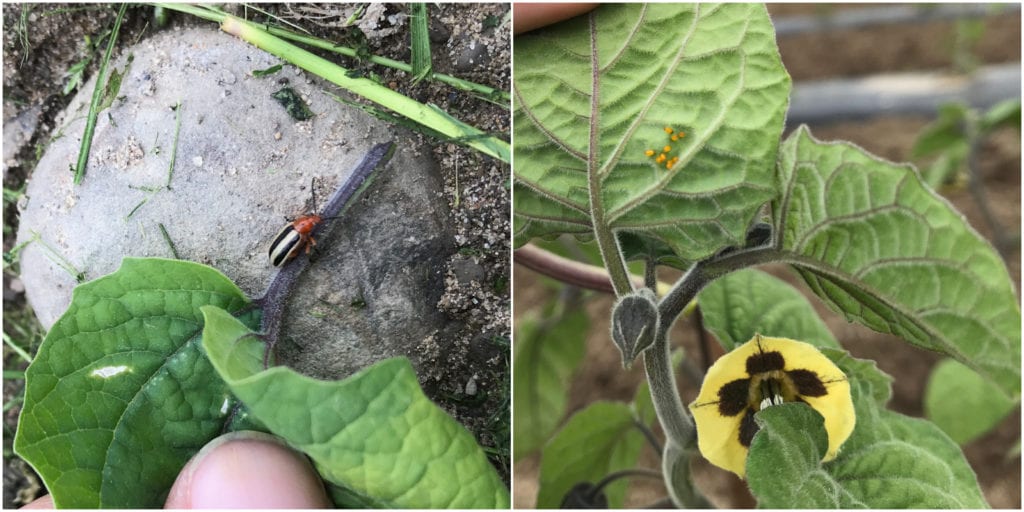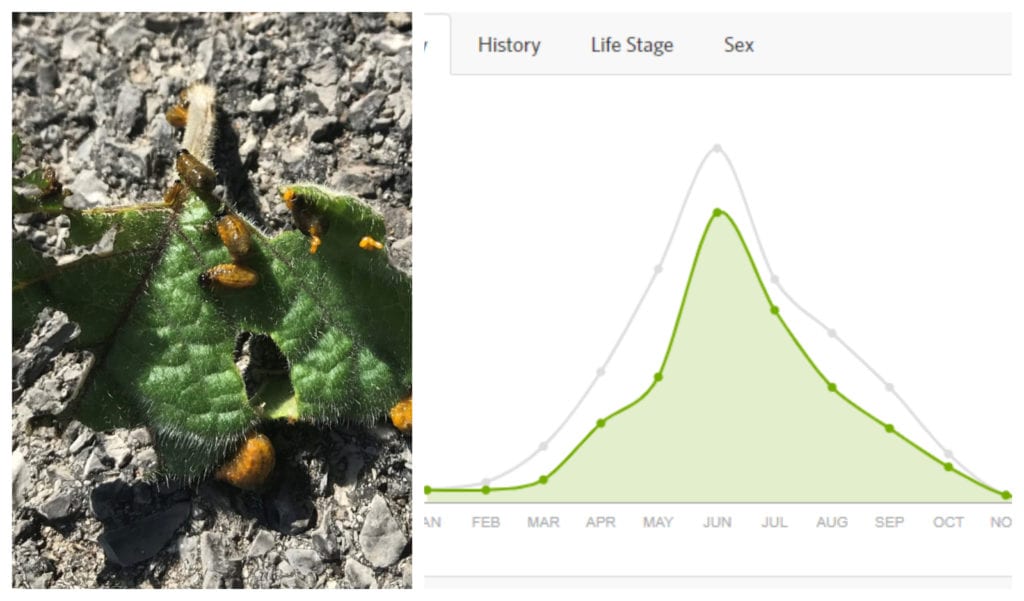Greetings Everyone,
Thank you all for submitting updates and logging observations on iNaturalist! It has been great to hear from so many of you and we hope you are enjoying this growing season. As a reminder please upload any insect observations found on Physalis to our iNaturalist group and indicate what species of Physalis the insect was found on. If you have any questions on using iNaturalist, please reach out to me and I would be happy to help you.
On the topic of insects, I wanted to draw your attention to a specific Physalis pest :The three-lined potato beetle (Lema daturaphila). The three-lined potato beetle is found on Solanaceous crops (members of the nightshade family) and their larvae can cause extensive damage to Physalis plants. The adult beetles appear in early June and lay clusters of orange eggs on the underside of Physalis leaves (pictured below).

Adult three-lined potato beetle and eggs
Though adults can cause damage to the plants, the most damaging stage appears to be larval (pictured below). We found in our own experiences last year that removing eggs and adults helped mitigate plant damage. A trick to removing them is to brush them off into a pail of soapy water, it makes for easy removal (and in my opinion is much nicer than squishing!). Based on our past experiences we have found that the population spikes in June and then tapers off into mid-July, which is also supported by data collected on iNaturalist (See chart below). This chart tracks the seasonality of three-lined potato beetle observations by month.

Three-lined potato beetle larvae damage a goldenberry leaf and three-lined potato beetle observations by month on iNaturalist
Once again, thank you everyone for your participation! Keep your eyes peeled for insects and let us know what you find. Happy growing!
